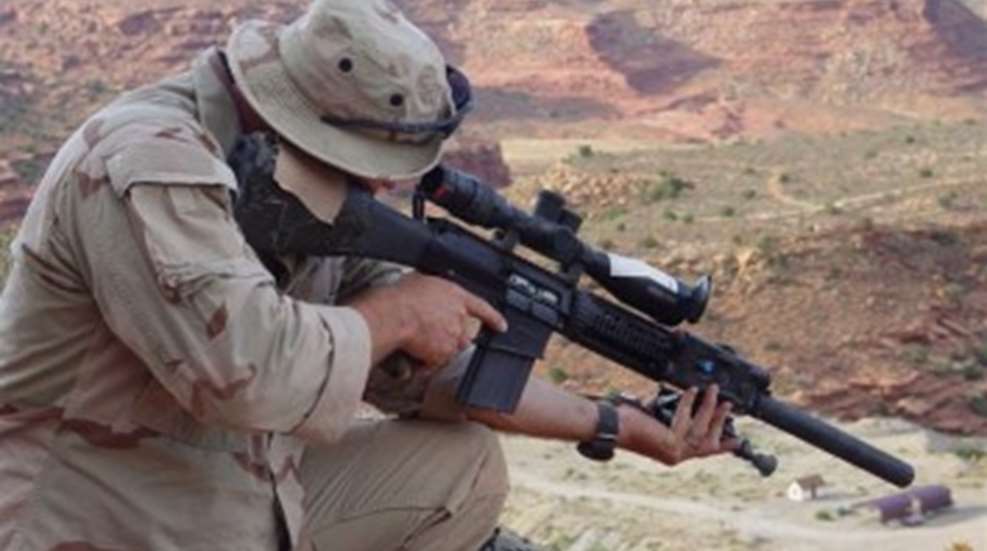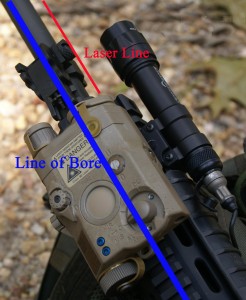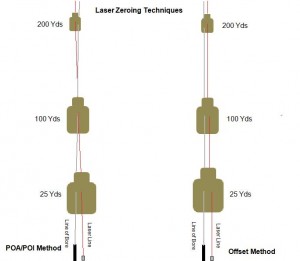
These days, you can't swing a dead opossum without hitting visible-laser options for most handguns and tactical rifles. Once relegated to a high-dollar clientele only, they're now standard and affordable accessories. Although I don't currently use lasers, I employed them heavily while playing the Special Operations game. I usually used infrared (IR) lasers that required night vision equipment, since visible lasers let bad guys know where you are. Occasionally, I trained with visible lasers on handguns, but my use of IR lasers was specific to shoulder-fired weapons. In those days, visible lasers weren't strong enough to reach rifle ranges, but that's no longer the case.
As civilians, we're unable to legally own IR lasers, so visible is the only option. Some green-laser manufacturers claim to be able to project an aiming point to 1,000+ yards at night, raising them to a new level of utility. Here are a few things I learned about mounting and zeroing IR devices that can be applied to this longer-range class of visible lasers as well.
Mounting
A laser's position on the rifle will affect several functional aspects, including manipulation of controls. Most tactical rifles have factory or add-on rails present, and all modern rifle lasers I've seen have rail mounts. If your laser has no remote capability, it should be positioned close enough to the support hand to allow easy manipulation of the controls without a dramatic shift in hand placement. Ideally, you'll want to be able to momentarily activate the laser on demand, without "burning" it constantly. This will both save battery life and reduce your signature. If you plan to leave the laser in place long-term, a mild thread-locker that creates fastener-friction will help the device remain in place during hard use. Be sure not to use any thread-locker that requires heat for removal. Polymer laser housings and sensitive electronics won't fare well under even short-term torch heat.

Zeroing
Be conscious of where the laser's line (LL) is in relation to the line of bore (LOB) when choosing a mounting location. Just like a riflescope's line of sight, the LL and the LOB require a merging of sorts in order to place rounds on target. The closer they are on the rifle, the easier it is to zero the laser. Problems arise from the fact that the LL is usually offset from the LOB in a compound direction (i.e. up/down and left/right). Two popular zero methods are used to deal with this problem: Point of Aim/Point of Impact (POA/POI) and Offset. The POA/POI method is similar to that used for sight zeroing, in that you select the range where you want the LL to intersect with the bullet's POI and adjust windage and elevation accordingly. The problem with this method is the actual zero distance is the only place where they intersect. The further the projectile is from that zero distance (in either direction), the greater the deviation. Think of the LL and LOB forming a big "X" with the zero range being in the center. Realistic engagement distances are relatively limited with a laser, so this isn't a problem for most routine shooting. However, you still need to know how far off the projectile will be from the laser at different distances. I used this method in the Army, and it worked fine for shots out to 200 meters with 5.56 NATO and approximately 300 meters with .308 Win. Beyond those distances, I used different aiming devices for night shooting.
The offset (or parallel zero) method is commonly taught and used, but is often misunderstood. This technique requires you to measure the deviation from the LL to the LOB in direction and distance. The idea is to zero the laser at a specified range—usually 100 meters—so the LL (indicated by the laser's spot on target) is the same direction and distance (in inches) from the bullet's POI as the LL and LOB are on the gun. The theory usually given for this method is LL/POI deviation remains constant far enough out, the shooter need only hold slightly off of the intended POI and fire, regardless of distance. Unfortunately, we don't shoot in a vacuum, so gravity and atmospheric effects influence bullet flight paths to be anything but parallel to the LL. In other words, the bullet is going to drop farther and possibly be pushed by the wind from its zeroed POI as it continues downrange. So, the relationship between the LL and LOB zeroed-in at 100 meters is going to change with increased distance. If bullets flew the way lasers are projected, life would be much simpler for shooters.
A good partial remedy to both of the above methods' flaws is to mount the laser so that the LL is directly above or below the LOB. The result is that normal trajectory (without wind effects) will plot the POI directly above and below the visible laser's "spot" out to several hundred meters (before spin drift becomes a factor). It's much easier to account solely for elevation holds than for an elevation and windage divergence that changes with distance. Most military laser designs don't allow this due to their width, which makes me wonder why someone hasn't developed an offset mount to solve this problem.

One last trick is to use your zeroed iron or optical sights to quickly get your laser on target when zeroing. After both are zeroed, you can check one against the other to ensure nothing has changed from time to time. I recently tested a $200 green rifle laser that would not hold zero from one shot to the next. Don't trust literature, sales pitches or gun writers with your life. Test your laser's mounting and zero methods at multiple ranges in day and night conditions thoroughly before relying on it for real world needs.






































